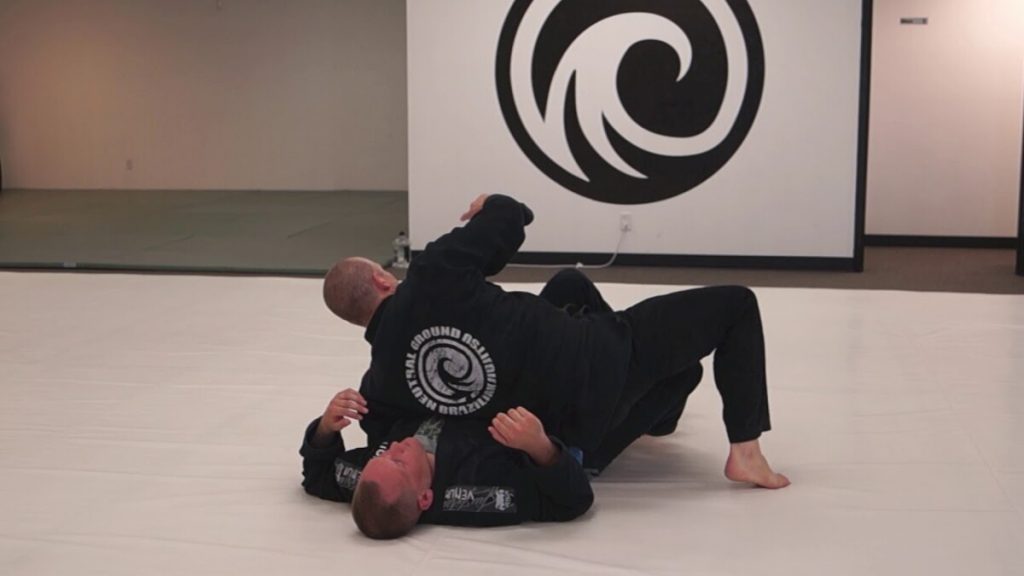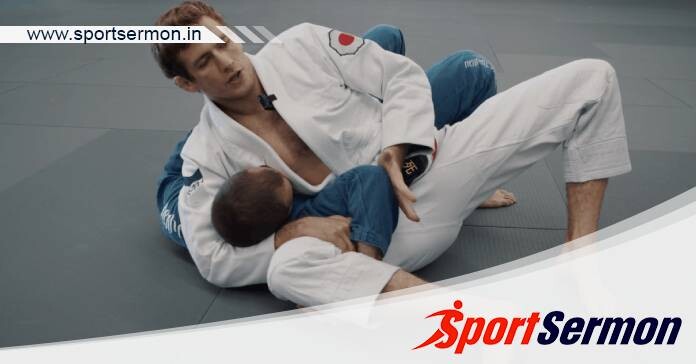Reverse Scarf Hold: It is customary in Brazilian Jiu-Jitsu to pass the opponent’s legs prior to applying a leglock. This suggests that you have to get beyond their defences to access their upper body. After a successful guard pass, side control often results in the opponent’s upper body being pinched and isolated. Side control may be executed in a few different ways, one of which we will discuss today. A lot of the time, side control is taught as an absolute controlling position. In this post, we will talk about the BJJ reverse scarf grip.
The Reverse Scarf Hold: What Is It?
The side mount with strong top control from the opponent is one of the hardest positions to get out of in BJJ. Other names for the reverse scarf hold are twister side control in the 10th Planet JJ system, ushiro kesa gatame in Judo, and reverse kesa gatame. Even though some BJJ practitioners—especially novices—might not be familiar with this position, it’s a useful technique for pinning your opponents on the mat and creating discomfort for them.
To put it simply, the reverse scarf grip is the exact opposite of the regular scarf grasp. Instead of going at your opponent’s head, your goal is to attack their lower body. Lowering your hip level is necessary to apply the reverse scarf grip and keep your hold over your opponent’s head. Then, create a chokehold akin to a north-south takedown by using your opposite arm to underhook their near arm. Frequently switched up, the reverse scarf hold may be used without head control and is usually used to proceed directly to the mount. In reverse, a half-guard pass is often executed like this.
You might also be interested in reading this: Comprehending BJJ Sit-Up Escapes
Scarf Hold Reversed To Top Control Pin

A reverse scarf hold is an option if you are unable to pin your opponent using the scarf grip or conventional side control. Reverse scarf hold: Attack your opponent’s legs or upper body with a number of submission techniques while they are facing the other way. This is a really practical role. This can soon become the go-to posture for certain grapplers.
Establishing the knee split position is one way to subdue your opponent from the reverse scarf grip. Establish the reverse scarf hold by removing your near arm (right arm) from head control and underhooking the opponent’s far arm, starting from side control (right side). off there, raise yourself onto your toes and remove your knees off the mat. Sit your right leg out, the leg next to the opponent’s shoulder, facing their lower body until it is in line with and close to their hip.
If the opponent’s arms are tightly framing your back in the reverse scarf hold, shrimp backwards to expose their elbow. From there, visualise the motion as you switch to riding. Seize the far knee of your opponent and drag it to fold, putting your top leg over your bottom leg. As you bring your knee to the ground to produce a knee split, use your far leg to close the space between your opponent’s top and bottom legs.
You may use your elbow to wipe and elevate your opponent’s far arm until you secure the cross-face since your underhooking arm is already in the right position. Now that you are in the top position, scoot your knee while placing your chest on their shoulder and forming a palm-to-palm grasp.
Turn the scarf over to mount it
When switching from the reverse scarf hold to mount, be cautious or your opponent can take your back. When you come up and begin to mount, your opponent can use their near arm—which is behind your back in the reverse scarf hold position—to frame your near knee by using the back door and landing behind you.
You need to narrow the space between your hip and the opponent’s arm when you go from the reverse scarf hold to the mount in order to remove the possibility of having your back snatched. Hooking the near leg of the opposition is one efficient technique to achieve so. As it adjusts their hip, it draws them closer to you, but by the time you mount and they attempt the same escape, you’ve already gained control over their leg, much like a grapevine. Before raising your knee to the complete mount, your opponent should remove their frame with their hand.
Break Free From The Reverse Scarf Hold

If your opponent is skilled at using their body weight to strengthen the connection, the reverse scarf hold may be rather unpleasant. Similar to the north-south posture, these non-traditional controlling positions need escape skills, particularly when facing stronger opponents.
If you are pinned, it will be difficult to escape the reverse scarf hold, and your opponent might quickly move to the mount. Raising yourself will stop them from separating your elbows instead. Make sure your elbows are gripped securely against your body as you utilise your forearms to take down your opponent.
If your opponent tries to switch to the mount, it will be simpler for you to hip escape if they are kept low by your hip. You can avoid mounting the opponent by successfully framing them down. You can frame with your forearm behind their back and take hold of the opponent’s open lapel with your near hand, passing it to your far hand. The opponent finds it challenging to turn and face you as a result. Post your near elbow on the mat while raising your body. To secure the back mount, you must next liberate your near leg by bridging towards their body to make room for it to swing from under and around their back.
In summary
Pin opponents using the reverse scarf hold: This unconventional yet efficient control technique works well against lighter opponents. Incorporating arm submissions into it is quite effective, and it can be used to go into other dominating positions such as the mount and back mount. Check out how the reverse scarf holds works in your game by practising it.

